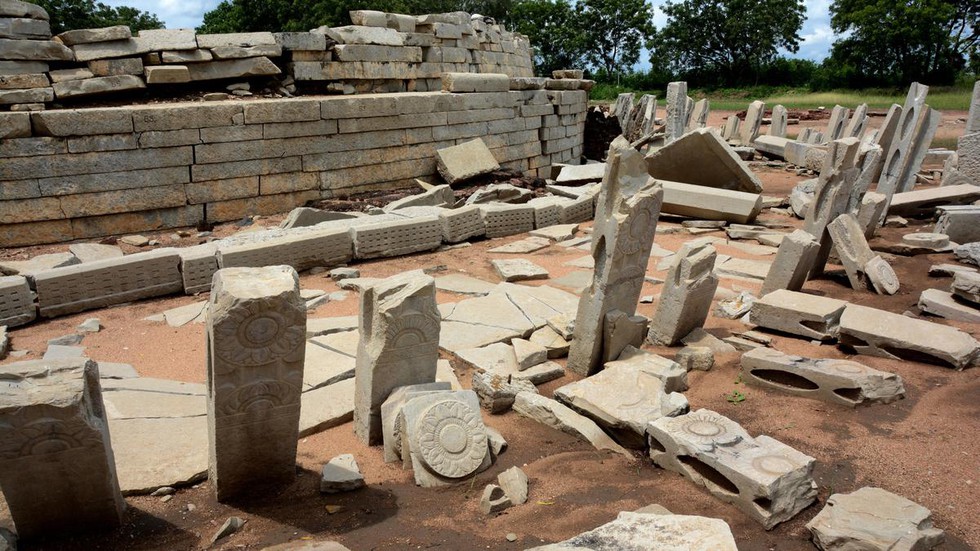Historians have unearthed evidence suggesting that the Sannati Ranamandal, covering 210 acres, served as a fortified area. Though only a small portion has been excavated, it’s believed to have been a significant Buddhist center, flourishing with Emperor Ashoka’s patronage. Later, it fell under the control of the Shatavahanas after the Mauryas.
Evolution of Maha Stupa
The Maha Stupa, approximately 22 meters in diameter and 17 meters tall, underwent three construction phases: Maurya, Early Satavahana, and Later Satavahana periods spanning from the 3rd century BC to the 3rd century AD. Archaeologists speculate that natural calamities led to its destruction.
Identification of Ashoka
A minor rock edict discovered in Maski town in Raichur district in 1915 established the titles “Devanampiye” and “Piyadasi” as those of Ashoka, previously unknown despite being widely referenced in ancient inscriptions.
Nagavi Ghatikasthana: The Southern Takshashila
Around 40 km from Sannati lies the site of ancient Nagavi Ghatikasthana, often dubbed the Takshashila of the South. It flourished as a university during the Rashtrakuta and Kalyana Chalukya dynasties between the 10th and 12th centuries.
Conservation Efforts and Tourism Development
The Sannati Development Authority was established by the Karnataka government to conserve the excavated antiquities from Kanaganahalli and promote the ancient Buddhist site as a prominent tourist and pilgrimage destination. Although the Karnataka Housing Board constructed a museum building, dormitories, and staff quarters, the museum building has yet to be handed over to the Archaeological Survey of India (ASI).
Multiple Choice Questions (MCQs):
- What was the estimated size of the Sannati Ranamandal?
- a) 100 acres
- b) 200 acres
- c) 210 acres
- d) 250 acres
- Answer: c) 210 acres
- Who is believed to have supported the flourishing of the Sannati Ranamandal?
- a) Gautama Buddha
- b) Emperor Ashoka
- c) King Chandragupta
- d) King Harsha
- Answer: b) Emperor Ashoka
- Which dynasties controlled the Sannati area after the Mauryas?
- a) Gupta Dynasty
- b) Shatavahanas
- c) Kushan Empire
- d) Chola Dynasty
- Answer: b) Shatavahanas
- What title was revealed to be associated with Emperor Ashoka through a discovery in Maski town?
- a) Maharaja
- b) Devanampiye
- c) Suryavanshi
- d) Rajaraja
- Answer: b) Devanampiye
- Which historical site was likened to the Takshashila of the South?
- a) Sannati Ranamandal
- b) Maha Stupa
- c) Nagavi Ghatikasthana
- d) Maski town
- Answer: c) Nagavi Ghatikasthana
- Who established the Sannati Development Authority?
- a) Archaeological Survey of India (ASI)
- b) Indian National Trust for Art and Cultural Heritage (INTACH)
- c) Karnataka government
- d) Ministry of Culture, Government of India
- Answer: c) Karnataka government
